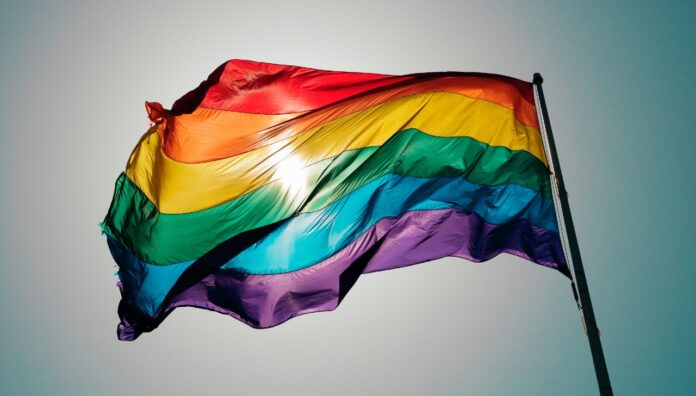Patients from LGBTQIA+ communities continue to experience poorer health outcomes than Australia’s national averages . What is causing this disparity and how can healthcare workers provide more culturally inclusive and sensitive care?
Up to one in 10 Australians identify as lesbian, gay, bisexual, transgender, queer, intersex, asexual and other sex or gender diverse (LGBTQIA+). However LGBTQIA+ patients face significant physical and mental health disadvantage.
A 2020 study by La Trobe University found that over a 12-month period, more than 57% of LGBTQIA+ participants had experienced discrimination due to their sexual orientation, with almost 80% of these experiencing discrimination due to gender diversity.
Half the LGBTQIA+ respondents in the Victorian Population Health Survey 2017 felt uncomfortable disclosing their sexual orientation or gender identity in a healthcare setting – impacting the quality of care they receive.
This leads to negative health outcomes, including significant psychological distress. In a sobering statistic, almost 75% of participants in the La Trobe study reported considering suicide in their lifetime.
PSA National President Dr Fei Sim said, ‘This is simply unacceptable’.
To improve access to inclusive, appropriate and discrimination-free healthcare, PSA has developed an Equality Statement that recognises the healthcare barriers LGBTQIA+ patients face, committing to educating pharmacists on providing equitable and culturally responsive healthcare.
‘As some of the most accessible health care professionals, pharmacists have a specific duty of care to patients to ensure that healthcare is provided in an inclusive and appropriate way for all people,’ she said.
Essential resources:
|
Pharmacists also play a vital role in supporting transgender and gender diverse patients undergoing gender-affirming hormone therapy.
‘The PSA is proud to offer pharmacist education in trans- and gender diverse healthcare in pharmacy, and to support pharmacists in providing inclusive care,’ she said.
‘The Australian healthcare system has the opportunity to better support LGBTQIA+ people at all stages of care, and the onus is on each of us to better understand the unique health challenges faced by LGBTQIA+ communities.’
Practice tips for creating a culturally safe environment
Lack of knowledge among healthcare workers of ‘legally authorised decision makers’ for LGBTQIA+ patients can lead to disregard for healthcare wishes, with biological family members given precedence over partners or chosen family.
James Cook University PhD Candidate Swapna Chaudhary, who researched the role pharmacists have in providing healthcare to transgender and gender diverse people, found most participants in her research preferred brief healthcare transactions. Many mentioned that their names and pronouns weren’t respected.
‘For example, they received medicines dispensed in their “dead names”, which they no longer use, causing mental distress in some participants ,’ she said.
However, pharmacists can play a crucial role in creating a welcoming and inclusive environment for the LGBTQIA+ community, said PSA Manager Training Delivery and Assessment Kevin Ou MPS.
Privacy and confidentiality should be prioritised, particularly in the easily accessible community pharmacy setting.
‘Pharmacists should be mindful that some patients might not be willing to discuss their health in an open space,’ he said.
‘Just last week when I dispensed some medicine for someone who was using it for an STI, they said to the pharmacy assistant, “oh my god, I’m so embarrassed” when paying for them at the counter.’
Perhaps due to past experiences, the patient automatically assumed their STI was publicly known and that they would face stigma due to the medicine’s association with sexual health. However, the medicine has multiple indications – including those not related to sexual health.
To help patients avoid this anxiety, Mr Ou recommends always offering a private option, such as a consult room or quiet area in the pharmacy, to discuss health concerns or medicines.
When conducting interviews with participants, Ms Chaudhary set up a consult room at JCU that displayed LGBTQIA+ and transgender flags on the wall and the table. She also wore a name badge printed with the transgender flag in the background.
Some participants mentioned they waited almost half an hour before entering a pharmacy because they were anxious about a potentially negative interaction, so including a few ‘sensitivity elements’ can go a long way.
‘If there’s a little inclusivity sticker on the pharmacy door, for example, it might relieve their anxiety of coming in and accessing care.’
If a patient has a negative reaction in your pharmacy, be mindful that it may stem from past discrimination in other healthcare settings, said Mr Ou. In these situations, he advises not to take it personally.
‘Be aware that the person may have experienced previous trauma, and if you’ve accidentally contributed to that by misgendering them, for example, a thoughtful apology can often go a long way,’ he said.
Don’t miss our upcoming Australian Pharmacist articles that explore this topic in greater detail. Our February issue cover feature outlines how the entire health system – including pharmacists – can step up to improve health outcomes for the LGBTQIA+ community.
We also explore the issues faced by LGBTIQ+ patients in rural areas, including service access, isolation, discrimination, and confidentiality.



 Jess Hadley, community pharmacist and Professional Officer at PDL[/caption]
Jess Hadley, community pharmacist and Professional Officer at PDL[/caption]
 Peter Guthrey, Senior Pharmacist – Strategic Policy at PSA[/caption]
Peter Guthrey, Senior Pharmacist – Strategic Policy at PSA[/caption]


 Professor Margie Danchin[/caption]
Professor Margie Danchin[/caption]

 Dr Peter Tenni[/caption]
Dr Peter Tenni[/caption]
 How should we deprescribe gabapentinoids, according to the Maudsley Deprescribing Guidelines[/caption]
How should we deprescribe gabapentinoids, according to the Maudsley Deprescribing Guidelines[/caption]






